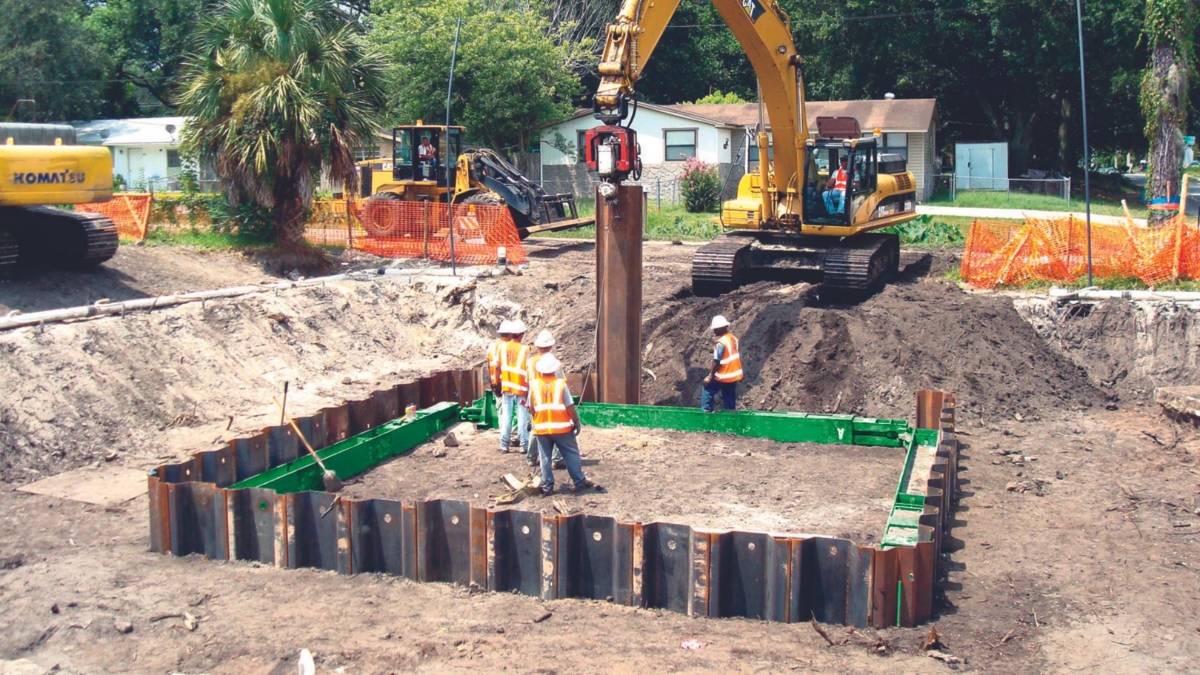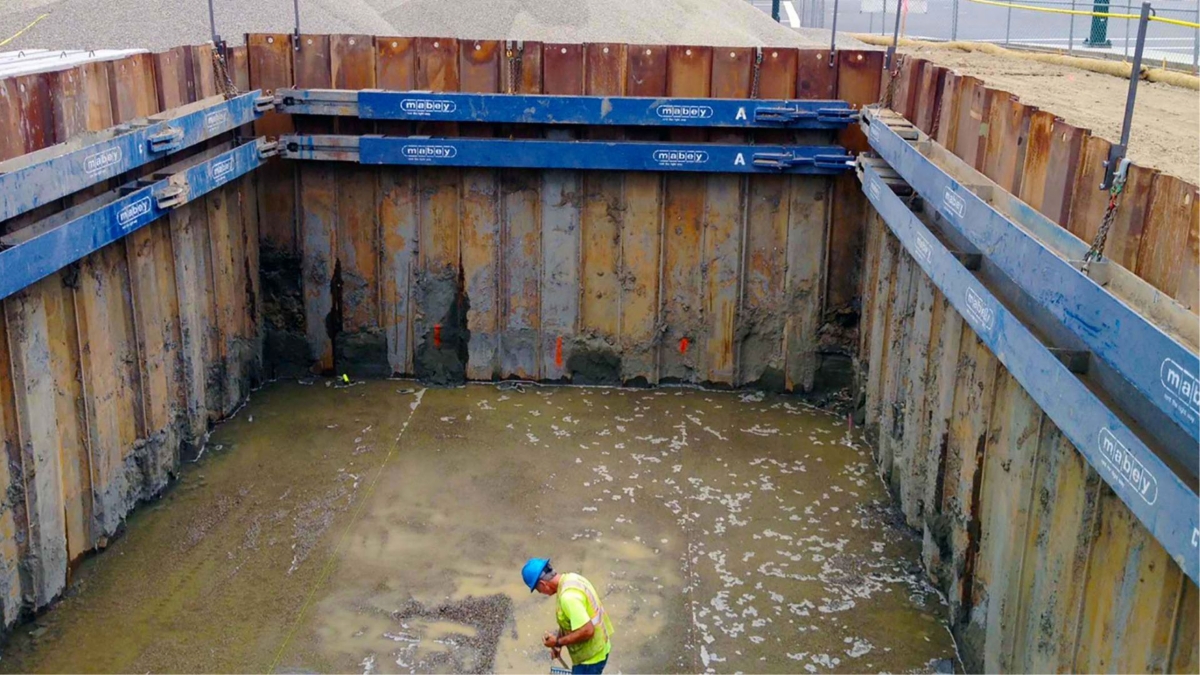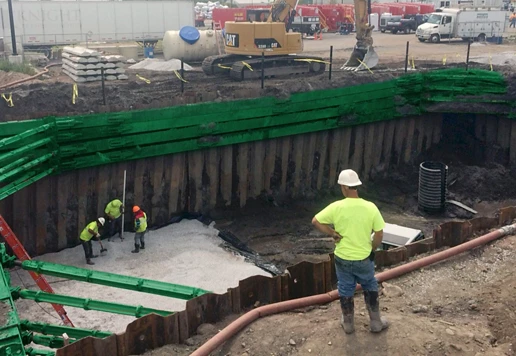Use the Sunbelt Rentals App
Find, rent, and return equipment, right at your fingertips
Trench Shielding and Its Benefits
Learn how trench shielding can protect and optimize productivity for your workers. Click any of the links below to learn more:
Trench Shielding
Ensuring the safety of workers and the stability of the trench walls is of utmost importance during construction and excavation. Digging trenches to lay pipelines, cables, or build foundations can be risky as the soil's natural stability can be compromised, leading to potential collapse and endangering lives. However, trench shielding offers a solution to this problem. By installing protective structures such as trench boxes, shields, or shoring around the trench perimeter, soil cave-ins and other related hazards can be prevented. These structures are designed to withstand the pressure exerted by the surrounding soil. They come in various sizes and shapes, suitable for different trench dimensions and soil types.
Benefits of Trench Shielding
- Worker Safety: reduces the risk of worker injuries and fatalities by providing a stable and secure environment for workers to operate within the trench.
- Prevention of Cave-Ins: effectively prevents soil cave-ins and collapses, ensuring the structural integrity of the trench throughout the excavation process.
- Enhanced Trench Integrity: helps preserve the shape and stability of the trench, enabling the construction of high-quality, durable foundations and structures.
- Increased Efficiency: facilitates smoother excavation operations, allowing for streamlined workflow and reduced downtime.
- Compliance with Regulations: ensures compliance with safety regulations and guidelines, helping construction companies avoid penalties and maintain a positive safety record.

Types of Trench Shielding
Understanding the benefits of a trench shielding system and the various types available can help you make an informed decision for your project. Whether you're working on minor repairs or large-scale systems, our Trench Safety experts can assist in selecting the ideal system to meet your project's needs.
Aluminum Trench Boxes
These boxes have an excellent weight-to-strength ratio, making them easily transportable and ideal for smaller excavation projects with shallow to moderate trench depths. They are most effective when speed and portability are vital, allowing for efficient installation and removal, especially in areas with limited space and quick turnaround requirements.
Steel Trench Shields and Boxes
Designed for heavy-duty trench protection, steel trench solutions are best suited for deep trenching projects where soil conditions are more challenging and require robust support and protection. They are particularly effective in situations where the excavation demands superior durability and strength to withstand the pressures of deep trenching and adverse soil conditions.
Hydraulic Shoring
Hydraulic shoring shields are composed of lightweight aluminum sidewalls and heavy-duty hydraulic spreaders, offering precise control and adaptable support for trenches of varying shapes and sizes. They are the preferred choice when dealing with trenches requiring adjustable support, particularly in situations where irregular shapes and non-uniform trench dimensions demand flexible solutions for secure and efficient excavation.
Slide Rail Systems
The Slide Rail System provides reliable support for trench walls and adjacent structures, especially in situations where traditional shoring methods are impractical. This system is best utilized in crowded job sites and areas where the "Dig and Push" method is more feasible than driving sheets, offering a streamlined approach to trench installation and removal, with the added benefit of minimal restoration.

Factors to Consider When Using Trench Shielding
A protective system refers to a set of safety measures and equipment that are implemented to prevent cave-ins and protect workers from potential hazards while working in trenches or excavations. OSHA, the Occupational Safety and Health Administration, sets standards that include requirements for implementing protective systems appropriate for the specific soil conditions and the depth of the trench, including trench shielding.
Hydraulic Pressure Requirements
Hydraulic pressure requirements for trench shielding systems depend on the type and size of the shield being used. The hydraulic pressure is crucial for stabilizing the trench shield and preventing soil movement. The specific pressure requirements vary based on the depth of the trench, soil conditions, and the weight of the soil being supported.
Maximum Depths and Depth Rating Requirements
Trench shields are designed to withstand specific depths and pressure limits. The manufacturers determine the maximum depth and depth rating requirements of trench shielding systems and should be strictly adhered to during the excavation process. Exceeding the maximum depth can compromise the structural integrity of the shield, leading to potential hazards for the workers.
Risk Assessment for Excavation Hazards
Conducting a comprehensive risk assessment is essential before starting any excavation work. This assessment, performed by the project's competent person, should include evaluating potential hazards such as cave-ins, falls, hazardous atmospheres, and incidents related to mobile equipment. Factors such as soil type, environmental conditions, nearby structures, and the depth of the trench should be considered to decide on the control measures to implement.
We offer a variety of Trench boxes to help you secure excavations and prevent cave-ins. Interlocking designs offer support for various depths.

Soil Conditions for Safe Use of Trench Shielding
OSHA recognizes different types of soil based on their stability and the potential risks they pose during trenching and excavation. The classification of soil types by OSHA helps to determine the necessary precautions and safety measures required for working in trenches.
Different Types of Soil and Depth Requirements
- Stable Rock: This type of soil has no tendency to break apart or crumble. Excavations in stable rock generally do not require any support systems.
- Type A Soil: This soil type is the most stable and has the highest cohesion. It includes clay, silty clay, sandy clay, and clay loam. Type A soil is the most stable of the three classifications and is considered the safest for trenching. However, protective systems are still required for excavations deeper than 4 feet.
- Type B Soil: This soil includes angular gravel, silt, silt loam, and previously disturbed soils. It is less stable than Type A soil and may require additional safety measures, such as sloping, shoring, or shielding, for excavations deeper than 5 feet.
- Type C Soil: This soil type is the least stable and includes materials such as gravel, loamy sand, and submerged soil. Type C soil requires significant safety measures, such as sloping, shoring, or shielding, for excavations deeper than 5 feet.
Please keep in mind that the soil classification guidelines provided for trenching and excavation activities are general and should be used as a reference only. Complying with OSHA guidelines and regulations specific to your location and project is essential to ensure safety and adherence to regulations.
Prioritize Your Project’s Safety and Efficiency with Sunbelt Rentals
Ensuring your team's safety and your project's success should always be your top priority. If you are ever in doubt, Sunbelt Rentals can assist you with custom-engineered safety strategies, cutting-edge technologies, and adherence to OSHA's strict safety standards. With our trench safety experts by your side, you can rest easy, knowing that your construction project is in capable hands.
Trench Safety Resources
Dive deeper into Trench Safety with these related articles, blogs, and success stories.







